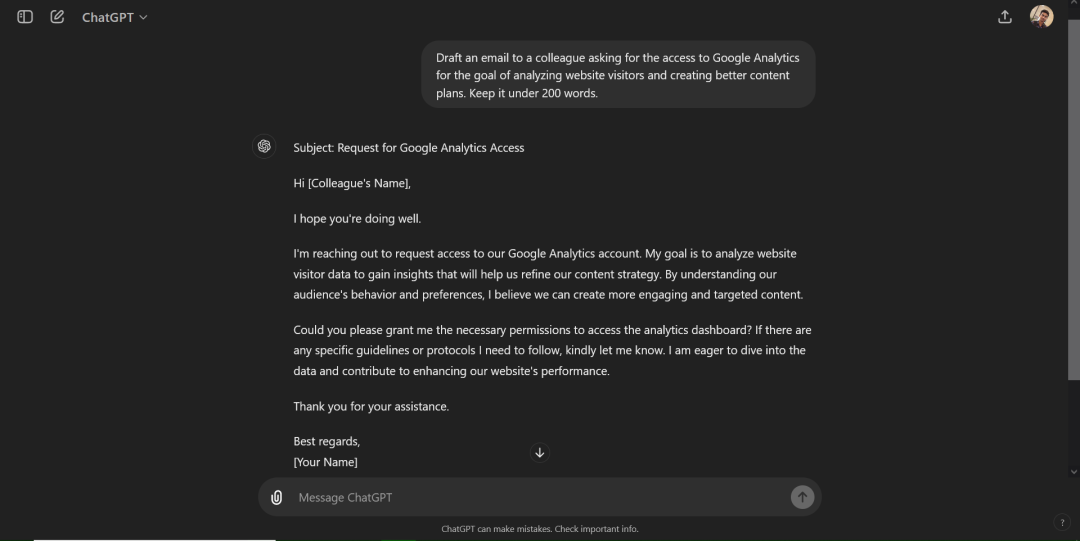Team May 24, 2024 No Comments

Everyone is talking about generative AI applications these days. This branch of artificial intelligence has surprised us all with its ability to talk and act like humans.
Generative AI has great potential to change the world. It’s already transforming fields like marketing, entertainment, and software development.
From automating repetitive tasks to becoming a smart personal assistant, generative AI is set to impact our lives in ways we can’t even fully imagine yet.
No surprise, the global generative AI market is expected to grow from 45 billion USD in 2023 to 207 billion USD in 2030. That’s a huge growth.
In this blog post, we will discuss nine innovative applications of generative AI. This will help you understand how this technology can change your life and the world around you, helping you stay updated with the technology.
Generative AI is a branch of artificial intelligence that can generate original text, code, images, audio, or even videos. Some of the most common generative AI tools are ChatGPT and Gemini for text generation, Dall-E2 for image generation, GitHub Copilot for code generation, etc.
But how does it work? Well, generative AI uses complex algorithms to learn patterns and structures from big datasets of human-created content. It then uses this knowledge to generate original content that’s similar to the data it was trained on.
This technology is already making waves. A recent study by McKinsey estimates that generative AI could add trillions of dollars in value to the global economy.
Companies are already using it to automate tasks, improve customer experiences, and even develop new products and services. In fact, the Financial Times found that 92% of Fortune 500 companies are building on OpenAI’s API. That’s insane, right?
Generative AI is helping us simplify complex processes, improve productivity, increase business efficiency, supercharge human creativity, and save huge costs. Actually, Gartner says businesses that will adopt GenAI can save 15.7% on costs.
Here are some remarkable applications and use cases of generative AI. As this technology continues to evolve, we can expect even more groundbreaking applications in the years to come.
Generative AI proves to be a good tool when it comes to sparking creativity and fueling strategic thinking. It can help you find ideas related to products, marketing content, business models, or even artistic works like novel writing. This helps us beat creative blocks and think out of the box effortlessly.
Similarly, generative AI helps us develop strategies to achieve goals. For instance, it can generate strategies for advertising campaigns, financial investment, content marketing, or even preparation for an exam.
Generative AI makes writing easier and faster. It can help writers brainstorm topics, structure their thoughts, create outlines, and prepare the first draft.
From blog posts, articles, product descriptions, sales copy, and social media posts to emails, AI can adapt to various writing styles and formats. This generative AI application is the reason why 73% of marketers are using GenAI tools.
What’s more, generative AI can also help writers refine their work by providing feedback on grammar, style, and tone. It can even suggest relevant sources and citations, ensuring that writing is well-researched and credible. This way, you can create high-quality content effortlessly.

Generative AI can summarize complex information into easily digestible formats. You can use this technology to condense research papers, articles, PDFs, or even entire books into key takeaways.
It can identify important themes, extract insights, and generate summaries for specific audiences. This GenAI application can be useful for students, researchers, employees, or anyone who needs to quickly understand what’s written in a document.
GenAI tools like the recently launched GPT-4o model can also handle audio and video modes. It can summarize lectures, podcasts, or meeting recordings. This type of automation boosts productivity and helps us do more in less time.
Generative AI is a great coding companion. It can suggest code snippets, complete functions, and even generate entire codes. They can understand a developer’s needs and provide relevant suggestions to make coding faster.
Generative AI also helps software engineers identify bugs and simplify the debugging process. This can save developers countless hours of frustration. For instance, GitHub Copilot is a generative AI tool that makes coding 55% faster.
Besides, generative AI can be used to analyze and improve code quality, identifying potential performance bottlenecks or security vulnerabilities. This helps developers better focus on creative problem-solving and build robust software.
This is one of the most remarkable applications of generative AI. The technology can create detailed, realistic, and high-quality images based on text prompts given by the user. Some of the best tools for this are Dall-E2 and Midjourney.
Generative AI can also enhance existing images by improving their quality, increasing resolution, and transforming them into 3D shapes. This technology is proving invaluable in fields like medicine, where AI can enhance medical scans to aid in diagnosis, and architecture, where it can generate 3D models from 2D blueprints.

This is another impressive application of GenAI. Now, you can create professional videos using text prompts without technical expertise or expensive equipment. OpenAI’s revolutionary tool, Sora, has made this sci-fi concept a reality.
This will help marketing teams generate engaging video content to increase brand awareness, educators create explainer videos to simplify concepts, or filmmakers produce detailed scenes to improve storytelling.
GenAI can also enhance existing footage, improve resolution, remove noise, and even add special effects.
Generative AI is making language translation easier than ever before. Trained on tons of text in different languages, these AI models can translate words and sentences with amazing accuracy.
This generative AI application helps businesses, travelers, creators, and anyone who wants to connect with a global audience. For instance, companies can easily translate their marketing messages for different countries, reaching more people worldwide.
Generative AI can also help people have conversations in real time, even if they don’t speak the same language. This way, you can connect with the whole world without any language barriers.
Generative AI also automates certain parts of data analysis. It can analyze massive datasets, spot patterns and connections, and find useful insights that help businesses make smart decisions.
For instance, in finances, generative AI can analyze market data and help investors find good opportunities or predict how the market will perform. In healthcare, it can study patient records to figure out who might be at risk for certain diseases or create personalized treatment plans.
This is an interesting use case of generative AI. It powers conversational interfaces that let us converse with machines. The most common examples are chatbots and AI assistants that can talk just like humans.
These intelligent conversational interfaces can understand our needs, give personalized answers, and make interactions feel more personal and engaging.
Businesses are using this technology to support customers 24/7. Chatbots integrated into websites can answer FAQs, collect leads, promote products, and increase sales.
No wonder the conversational AI market is expected to grow from 10.6 billion USD in 2024 to 44.4 billion USD by 2031.
If you want to learn the ins and outs of Generative AI and build useful apps, check out Ivy’s Generative AI Certification course.
We have partnered with the prestigious E&ICT Academy at IIT Guwahati, so you will be learning from IIT professors and experts who have worked at top companies like Amazon, Google, and Microsoft.
You will go from the basics, like generative AI applications, to advanced skills, like machine learning, deep learning, Langchain, RAG, Transformer, and LLM.
But this 45-week course goes beyond the theory. You will get hands-on experience through 20+ real-life projects that deal with real-world problems. By the end, you will have a portfolio that showcases your skills to potential employers.
Visit this page to learn more about the GenAI course and see how you can join the next generation of AI innovators.